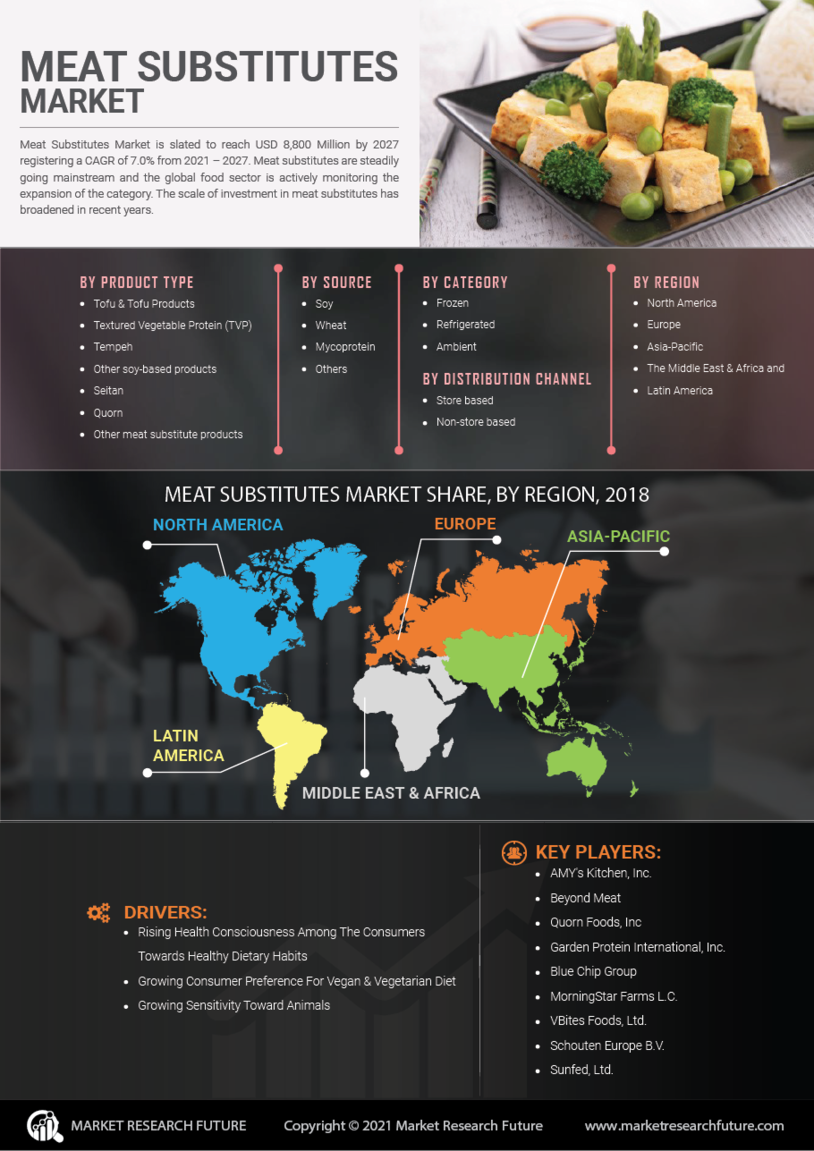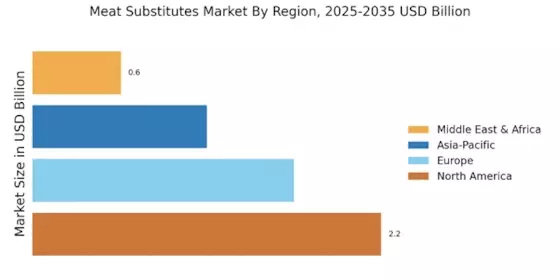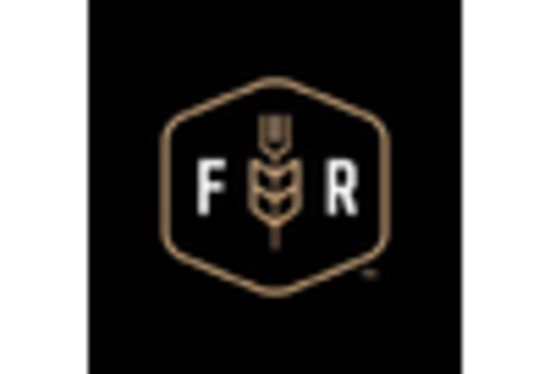The Meat Substitutes Market is currently characterized by a dynamic competitive landscape, driven by increasing consumer demand for plant-based alternatives and heightened awareness of sustainability. Major players such as Beyond Meat (US), Impossible Foods (US), and Quorn Foods (GB) are at the forefront, each adopting distinct strategies to enhance their market presence. Beyond Meat (US) has focused on innovation, particularly in developing new product lines that mimic the taste and texture of traditional meat, while Impossible Foods (US) emphasizes its proprietary technology to create meat substitutes that appeal to both vegetarians and meat-eaters alike. Quorn Foods (GB), on the other hand, has concentrated on expanding its product range to include more sustainable options, thereby appealing to environmentally conscious consumers. Collectively, these strategies contribute to a competitive environment that is increasingly centered around innovation and sustainability.
In terms of business tactics, companies are localizing manufacturing to reduce supply chain complexities and enhance responsiveness to regional market demands. The Meat Substitutes Market appears moderately fragmented, with a mix of established brands and emerging players vying for market share. The collective influence of key players is significant, as they not only drive innovation but also set trends that smaller companies often follow, thereby shaping the overall market structure.
In August 2025, Beyond Meat (US) announced a partnership with a major fast-food chain to introduce a new line of plant-based burgers. This strategic move is likely to enhance its visibility and accessibility, tapping into the growing trend of fast-casual dining while reinforcing its commitment to innovation. Such partnerships may also serve to solidify Beyond Meat's position as a leader in the market, as they leverage the extensive distribution networks of established food service providers.
In September 2025, Impossible Foods (US) launched a new product line aimed at the retail sector, featuring ready-to-cook meal kits that incorporate their plant-based meat. This initiative appears to be a response to the increasing consumer preference for convenience and home cooking, suggesting a strategic pivot towards direct consumer engagement. By diversifying its offerings, Impossible Foods may enhance its competitive edge and cater to a broader audience, potentially increasing market penetration.
In July 2025, Quorn Foods (GB) expanded its operations into Asia, marking a significant step in its global growth strategy. This expansion is indicative of the company's intent to capitalize on the rising demand for meat alternatives in emerging markets. By establishing a presence in Asia, Quorn Foods may not only diversify its revenue streams but also position itself as a key player in a region that is increasingly adopting plant-based diets.
As of October 2025, the Meat Substitutes Market is witnessing trends that emphasize digitalization, sustainability, and the integration of artificial intelligence in product development and supply chain management. Strategic alliances are becoming increasingly pivotal, as companies collaborate to enhance their technological capabilities and market reach. Looking ahead, competitive differentiation is likely to evolve, shifting from traditional price-based competition to a focus on innovation, technological advancements, and supply chain reliability. This transition underscores the importance of adaptability and forward-thinking strategies in maintaining a competitive edge in the rapidly evolving market.


















Leave a Comment